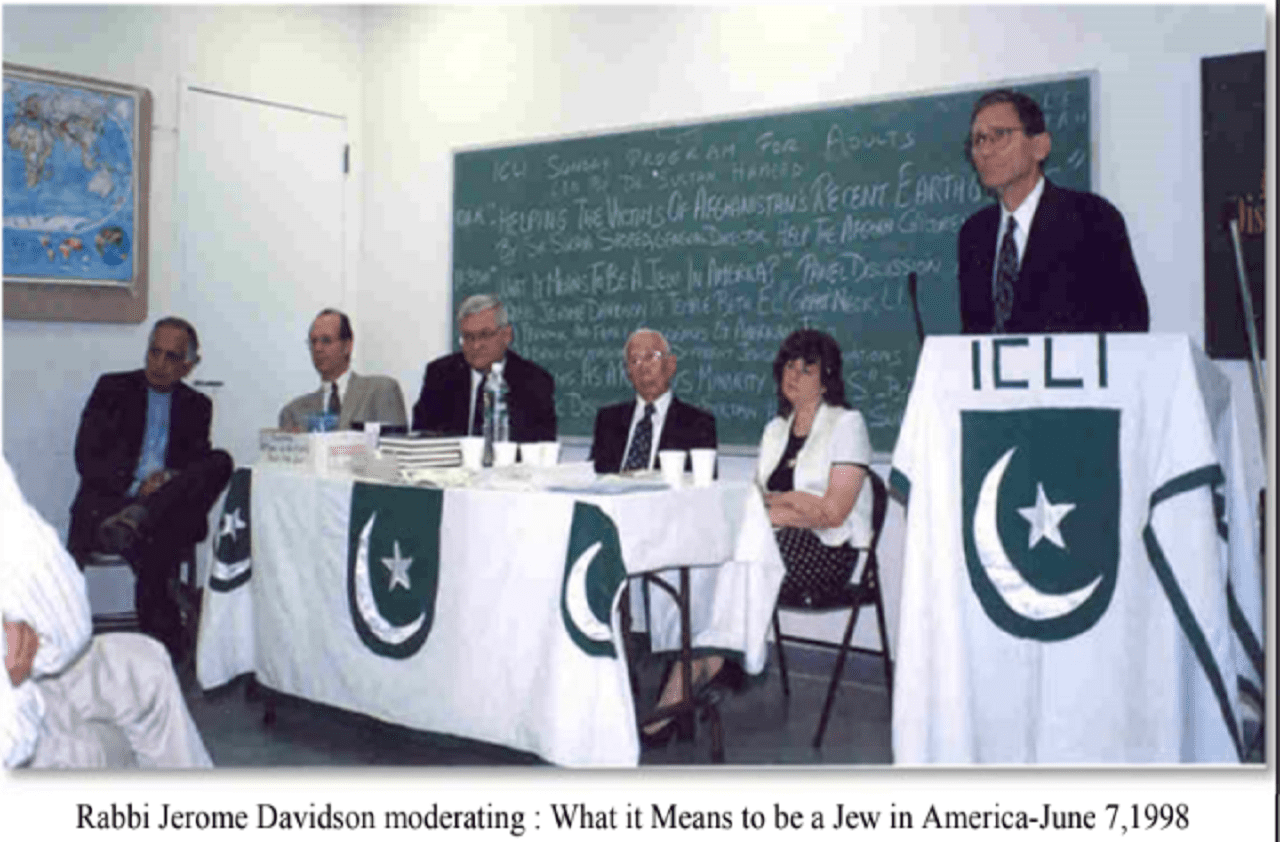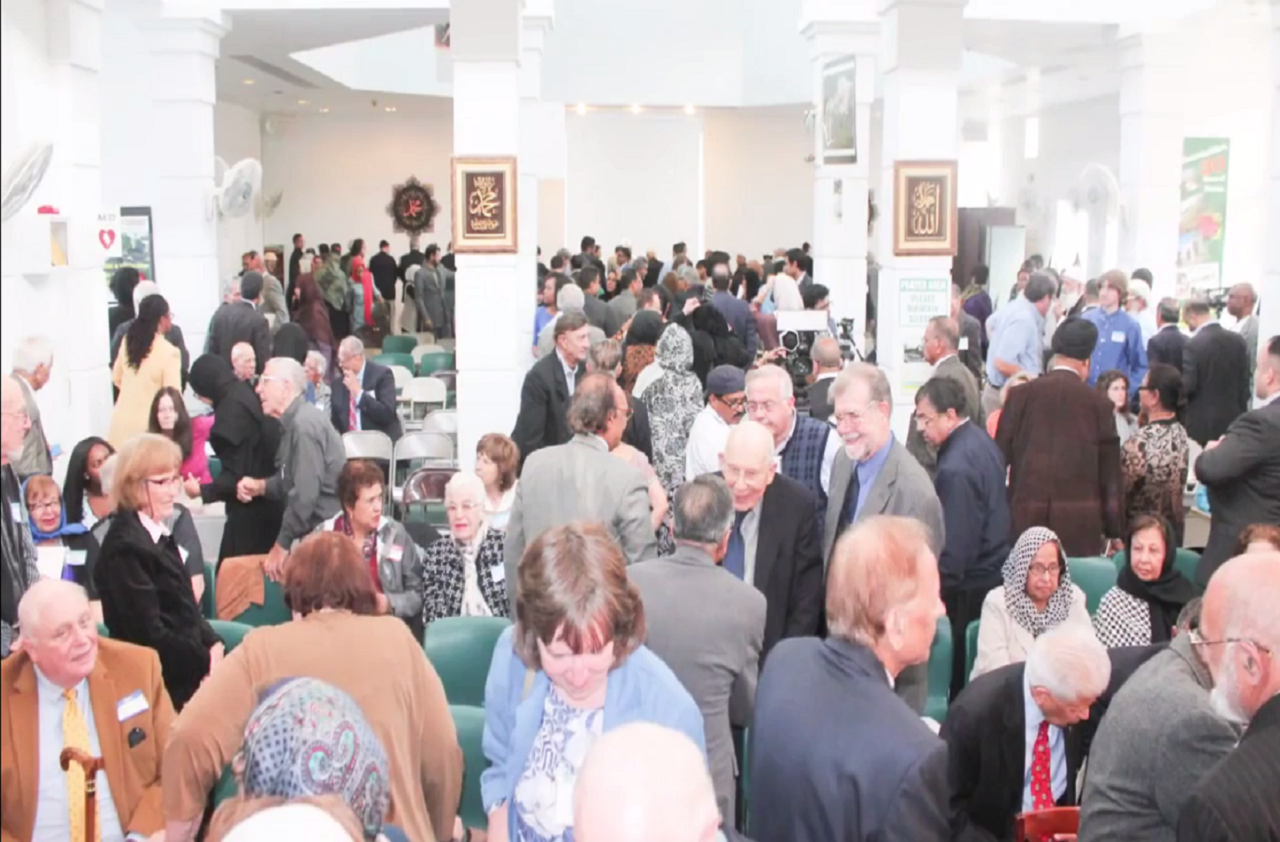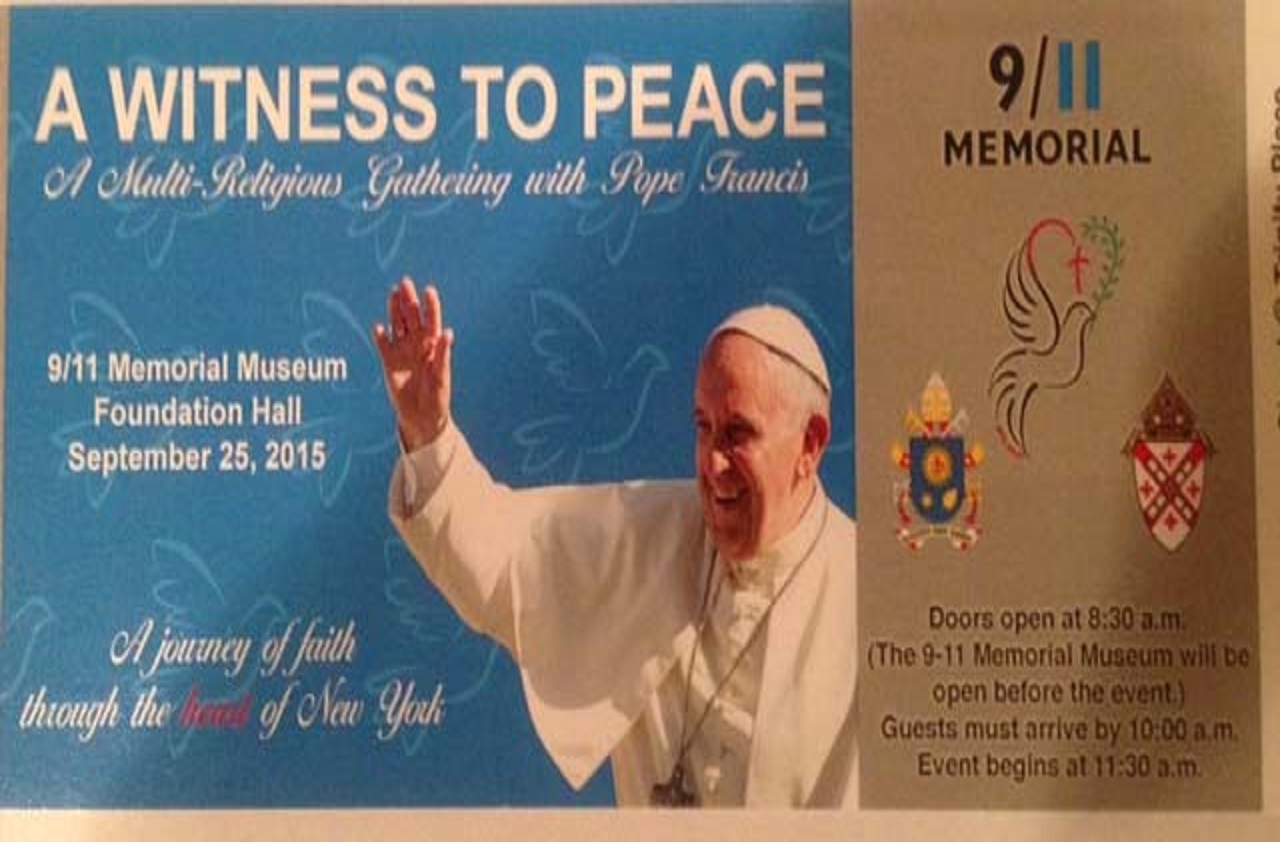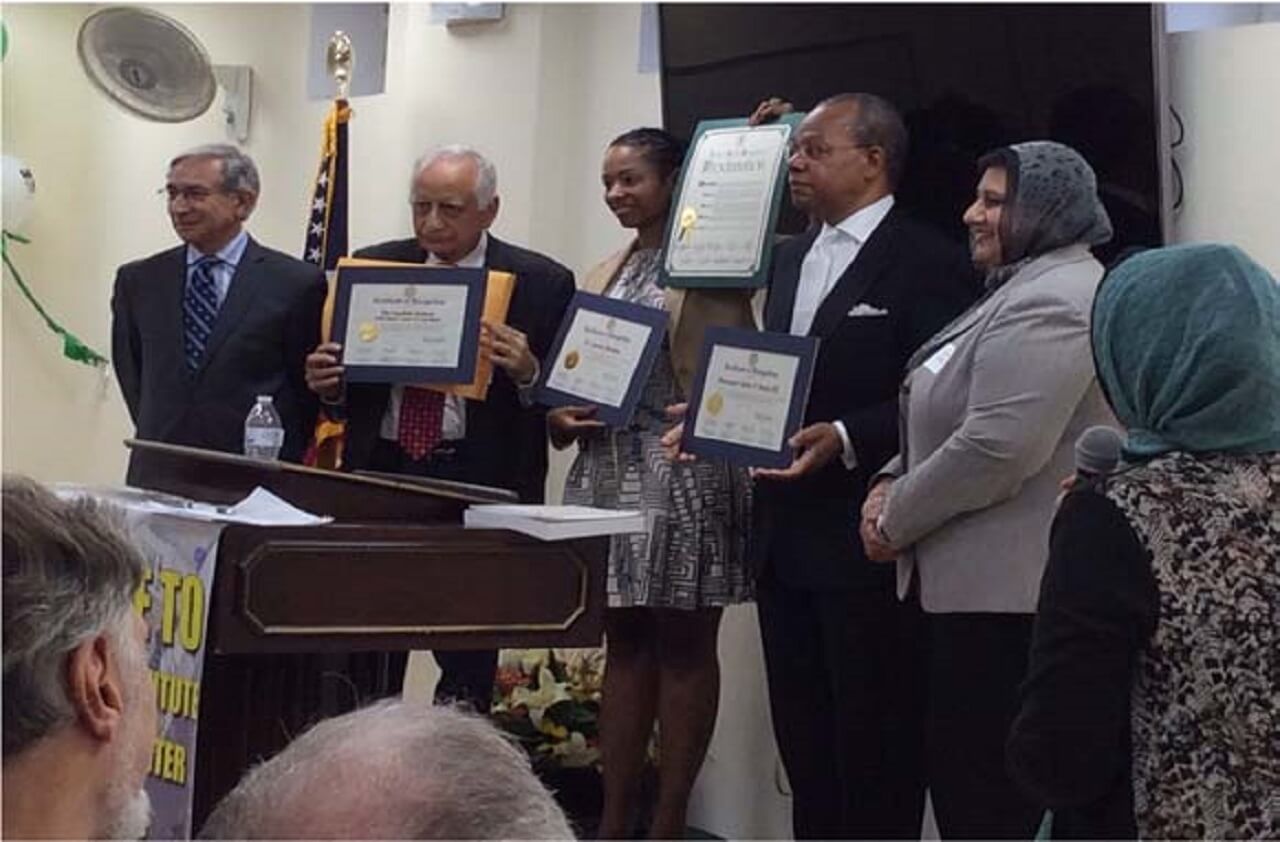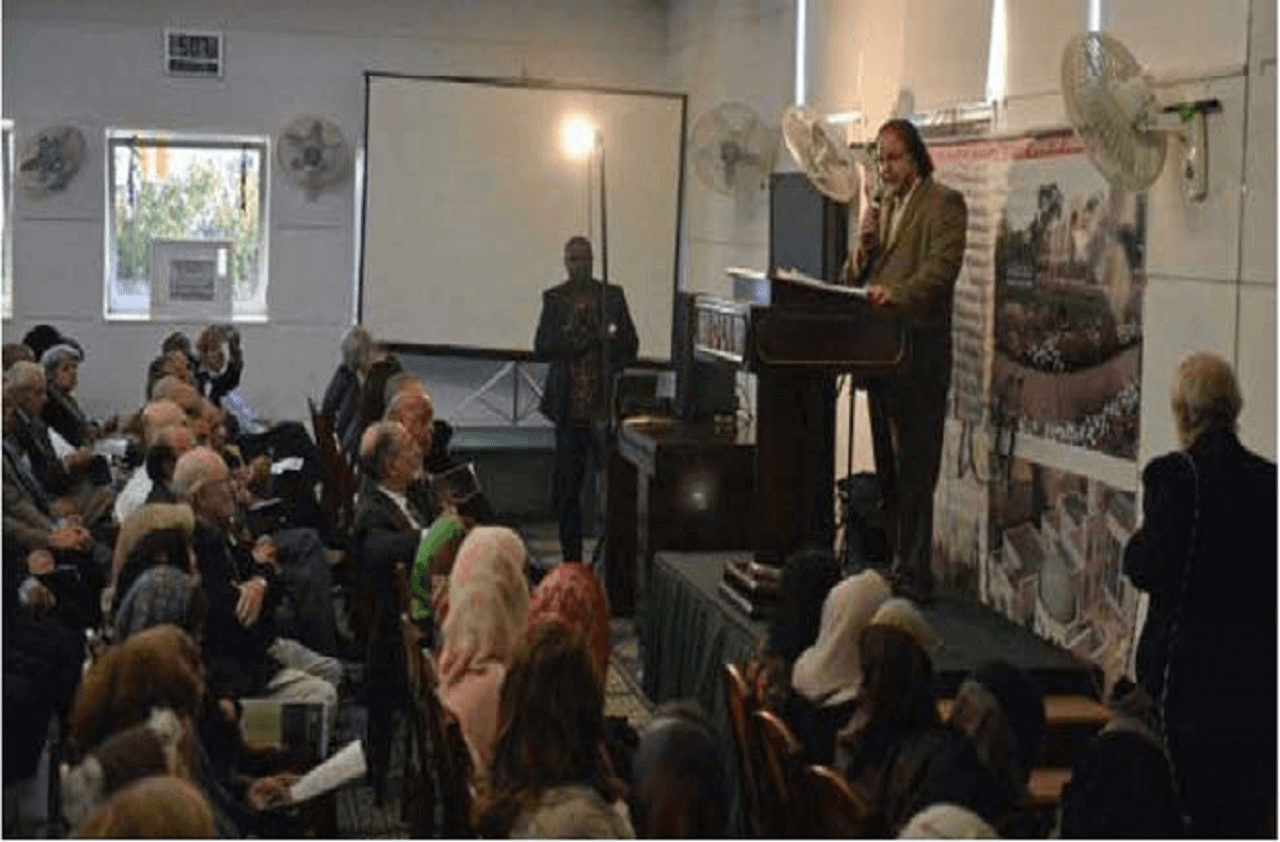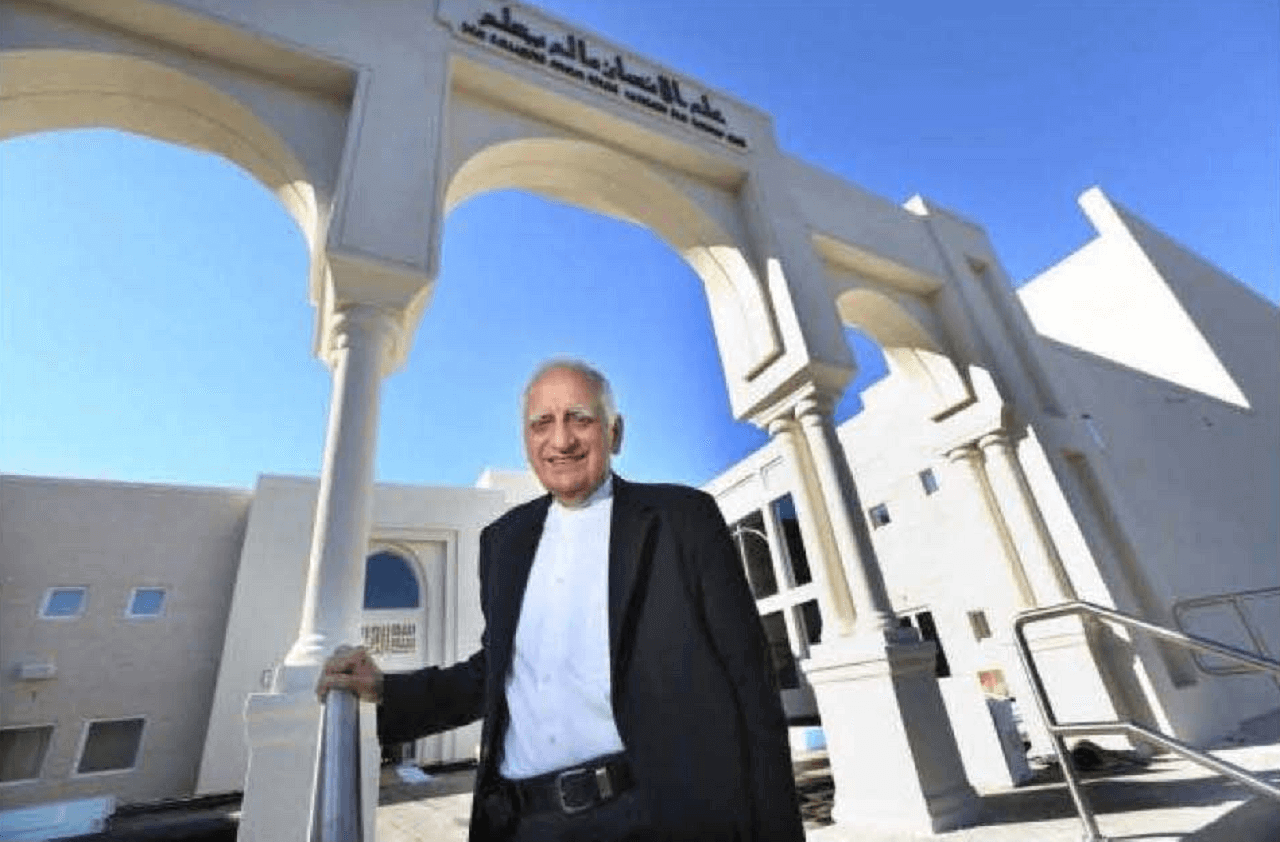American Muslims and Jews in Dialogue (AMJID) A Long Island/New York Experience
As a child growing up in Kashmir, I had often heard my dad, Haji Ghulam Hassan Khan, speak in very fond
terms of his experiences when he was a student at Harvard in Cambridge, Massachusetts, from 1928 to 1932. He
often mentioned the kindness and affection his landlady (who was Jewish) showed towards him.
My first contact with members of the Jewish faith happened after I migrated to the United States from Kashmir
for my medicine residency training in 1966 in Barberton, Ohio. A year later, my wife Arfa and I came to New
York to further pursue our medical training. We started at Queens Hospital Center (QHC), managed by Long
Island Jewish Medical Center (LIJMC). From 1967 on, we had regular contact with Jewish colleagues, several of
whom played a major role as mentors and helped us in the transition and cultural adjustment.
For me personally, the role Dr. Nathan Seriff and Dr. Edward Meilman played in my professional advancement
was crucial. Both my wife Arfa and I had important management responsibilities at QHC/LIJMC. While we had
regular contact with our Jewish colleagues, we never had a chance to engage in a serious, meaningful interfaith dialogue.
All this changed in January 1992, when the Islamic Center of Long Island received a call from Bobbie Rosenzweig from Temple Beth-El, a
prominent Reform synagogue in Great Neck, New York. Mrs. Rosenzweig had inquired about Muslims on Long Island who might be interested
in having a meeting with her and Rabbi Jerome Davidson. The late Al Haaj Ghazi Y. Khankan and I visited Temple Beth-El and met
with Rabbi Davidson and Ms. Rosenzweig. This was the initiation of our very successful interaction with members of Temple Beth-El. We
named it American Muslims and Jews in Dialogue, AMJID. Since this was a unique and new experience for us, we had to develop an agenda
and method of operation with a focus on topics of mutual interest.
In this interaction, the following Quranic verses guided me:
Chapter 29, Verse 46:
And dispute ye not With the People of the Book, Except with means better (Than mere disputation), unless It be with those of
them Who inflict wrong (and injury); But say, “We believe In the Revelation which has Come down to us and in that Which
came down to you; Our God and your God Is One; and it is to Him We bow (in Islam).”
Mere disputations are futile. In order to achieve our purpose as true
standard-bearers for Allah, we shall have to find true common grounds of
belief, as stated in the latter part of this verse, and also to show by our
urbanity, kindness, sincerity, truth, and genuine anxiety, for the good of
others, that we are not cranks or merely seeking selfish or questionable
aims.
Chapter 16, Verse 125:
Invite (all) to the Way Of thy Lord with wisdom And beautiful
preaching; And argue with them In ways that are best And
most gracious: For thy Lord knoweth best, Who have strayed
from His Path, And who receive guidance.
In this wonderful passage are laid down principles of religious teaching,
which are good for all time. But where are the Teachers with such qualifications?
We must invite all to the Way of Allah (God), and expound His
Universal Will; we must do it with wisdom and discretion, meeting people
on their own ground and convincing them with illustrations from their
own knowledge and experience, which may be very narrow, or very wide.
Our preaching must be, not dogmatic, not self-regarding, not offensive,
but gentle, considerate, and such as would attract their attention. Our
manner and our arguments should not be acrimonious, but modelled on
the most courteous and the most gracious example, so that the hearer
may say to himself, “This man is not dealing merely with dialectics; he is
not trying to get a rise out of me; he is sincerely expounding the faith that
is in him, and his motive is the love of man and the love of Allah (God).”
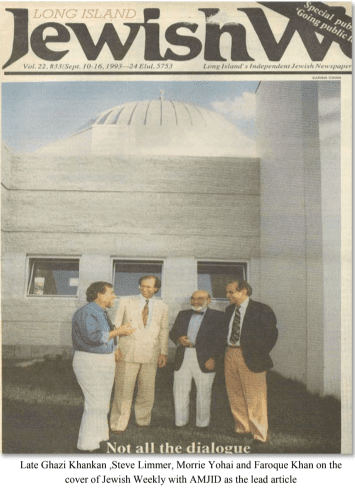
In the book, Story of a Mosque in America, published in early 2001, I
devoted a full chapter to AMJID and highlighted my impressions of
what’s required for a successful dialogue: proper attitude; respect and
humility; clear definitions of positions; comparison of similar items; a balance in participants (12 to 15 members in each group); establishment
of ground rules, agenda and parameters.
We would meet at our homes every two to three months and
discuss topics such as the Quran, Sunnah and Hadith; the
Hebrew scriptures; the role of the mosque; women in Islam
and Judaism; Prophet Abraham; fasting; hajj; stereotypes
before and after the AMJID dialogue, and Jerusalem.
While we were having these discussions, a sense of trust
and friendship developed, and we arranged some special
sessions for the entire community of Temple Beth-El and
the Islamic Center of Long Island and invited keynote
speakers. Here are a few examples:
- On November 12, 1993, at Temple Beth-El, the subject
was “Towards Greater Understanding and Cooperation
Between Muslims and Jews in America.” The keynote
speaker was Professor Sulayman S. Nyang of Howard
University, Washington, DC.
- On November 6, 1994 at the Islamic Center of Long Island, the subject was “Prophet Moses in the Torah and Quran. Muslims and Jews
in America. What Unites Us?” The speaker was Rabbi Jerome Davidson.
- On June 7, 1998 at the Islamic Center of Long Island, the subject was “What it Means to be a Jew in America. The Way it Was and The
Way it Is. How Did We Get There?” This time, we had multiple speakers.
The idea for this 1998 topic came from us at the mosque. We wanted primarily to learn how the Jewish community in North America has
been able to accomplish so much in such a short period of time. We heard this perspective from three generations:
1. Dr. Isidore Bernstein described his experience in the Forties and Fifties, when he had to struggle against prejudices against Jews, who
found themselves denied admission to universities and other public institutions.
2. Dr. Martin Hoffert recounted his experience in the early Fifties and Sixties, when many more centers of higher education had started
accepting qualified Jewish students, and doors opened for him that had remained closed for Dr. Bernstein.
3. In the final presentation, Mrs. Stephanie Propos Fishkin, part-time attorney, mother, and volunteer, described her upbringing and education
in the Seventies and Eighties. In that period, she felt free to choose her college and career, and she could combine her personal and
professional lives. For us at ICLI, it was very reassuring to learn how a minority Jewish community was able to overcome the many hurdles
it faced in almost all aspects of life in United States.
On December 5,1999 at the Islamic Center of Long Island, the topic was “One City, Three Faiths: The Meaning of Jerusalem in Judaism,
Christianity and Islam. The speakers were Rabbi Karen Bender, Monsignor Tom Hartman, and Habeeb Ahmed.
To spread the word about the AMJID experience beyond our two congregations, Bobbie Rosenzweig and Ghazi Khankan presented the JID
experience at the annual convention of Reform Judaism in San Francisco. I presented the AMJID experience at the annual convention of the
Islamic Society of North America in Chicago in September 2003.
Beyond the discussions, we also celebrated holidays together. We broke the Ramadan fast at Temple Beth-El and had a Sukkoth celebration
at the mosque in October 2006.
Expanding our efforts beyond Long Island, in February 2006 we took a group of Jewish, Catholic, and Muslim high school students on a trip
to the Holy Land. Newsday and the New Y ork Times wrote about the trip, and it was the subject of a program on Telecare, the television network
of the Roman Catholic Diocese of Rockville Centre.
Measurable Outcomes:
A Positive Image of Islam and Muslims on Long Island
Very favorable reports regarding ICLI have been published in Newsday, the New Y ork Times, the Westbury Times and Jewish World, and
readers of those articles have responded positively. The author of two of these articles in the New Y ork Times and Jewish World was Walter
Ruby, who attended one of the AMJID sessions. Here are a few headlines from those stories:
“LI Mosque is a Sign of Islam’s Community Growth,” the New Y ork Times, February 25, 1993.
“Mosque Opens Doors to Neighbors,” Newsday, June 6, 1993.
“Mosque Feted with Open House,” the Westbury Times, June 17, 1993.
“Long Island Jewish-Muslim Dialogue Group Works to Break Down Stereotypes and Build the Bonds of Understanding,” Long Island
Jewish World, September 10-16, 1993.
“Long Island Muslims and Jews Together in Worship,” Newsday, November 13, 1993.
“In Tense Times, A Seder Stresses Unity,” Newsday, March 23, 1994.
“Muslim Leaders on LI Temper Rhetoric and Focus on Local Social Problems,” the New York Times, Sunday, May 1, 1994.
AMJID Responses to Tragic Events:
The Hebron Massacre:
On Friday, February 25, 1994, 50 Muslim worshippers in prayer were killed, and an additional 150 were wounded. This senseless terrorist
attack by Dr. Baruch Goldstein caused an immense outrage in the Muslim community, and I shared with ICLI members the sentiments expressed
by AMJID participants:
Rabbi Jerome Davidson said: “We are outraged by this violation of basic human values. We urge Israel to take stronger steps to control violence
by Israelis against innocent Arabs and Muslims.”
Mrs. Bobbie Rosenzweig said: “About 70 members of the temple prayed. We are angry, ashamed and disgusted. Please convey this sense of
grief to all members.”
The 9/11 Attacks:
A month after the attacks killed nearly 3,000 people in New York, Washington, and Pennsylvania, AMJID sponsored an event on October 19,
2001 at Temple Beth-El, where I reported on the impact of the attacks on the Muslim community. At the event, I shared with the audience
the statement issued by the Islamic Center of Long Island Board of Trustees and published in the Westbury Times on Thursday, Oct 18, on
page 5. The statement said:
We condemn terrorism. We support our government in its global fight against terrorism. We thank our leaders and fellow Americans
for their leadership and civility. We urge our leaders to promote justice and human rights all over the world. We offer our services
and contacts, and want to be a part of the solution to this problem.
In addition, I told the attendees that Muslims were also victims, and I offered two examples to bring home this message:
- Mohammad Salman Hamdani, a New York City police cadet and an emergency medical technician, was at a crossroads in his life, trying
to decide whether to enter the NYPD or to emulate his brother by going to medical school. While he weighed his options, he was working
at the Rockefeller Institute in Manhattan. On 9/11, he disappeared. His mother, Talat Hamdani, refused to believe that her son was
dead, and she and her family went to Mecca on pilgrimage. (Months later, workers at Ground Zero found Salman’s remains. He had obviously
seen the smoke and flames as he took the elevated train to work, had gone to the site to offer his EMT skills, and had been
crushed beneath a falling tower.)
- Amenia Rasool’s obituary in the New Y ork Times caught my eye. She was an accountant who would get up at 5, do laundry, kiss her
four kids, and leave a tidy house in Queens and go to work on the 95th floor of the World Trade Center. She and her husband, Sadiq, a
city accountant, jointly managed the house. As a young woman, she had come to America with her parents from rural Ghana, much like
her husband. Their marriage was arranged by their parents and flourished on a mix of Islamic tradition and American opportunity. The
death of Amenia Rasool, 33, in the 9/11 attacks left her husband behind with four children, ages 8, 6, 3, and 1. What can justify such
barbarity?
At that Temple Beth-El gathering, I concluded my presentation with some possible explanations and recommendations. In my view,
there are three basic reasons for the current fertile ground for violence and terrorism:
- Governments refuse the political, social and economic needs of enlightened populations. Egypt is a good example.
- Artificial states maintain order by imposing centralized institutions in their multinational/tribal populations. Nigeria is a good
example
- Religious revival, part of a worldwide phenomenon, is accelerated by the above two conditions.
In addition, other factors lead to anger and desperation around the globe:
- Over 60% of the world’s population live on less than two dollars a day
- Treating an AIDS patient in Nassau County costs $20,000 a year. In sub-Saharan Africa the annual health budget per person is $20 a
year.
- We in America have 5 percent of the world’s population, and we consume 35 percent of the world’s resources.
In the face of these problems, we have to pursue solutions. Dr. Martin Luther King Jr. said one needs nourishment for the body, mind and
soul. In the spirit of Dr. King, I once heard President Clinton in the White House make a plea for support of his initiative for international
debt relief; treatment of tuberculosis, malaria, and AIDS; and one meal a day per child in schools around the world.
We need to develop and nurture regional economies, export our knowledge in public health and education, and take a total new look at our
economic and foreign policy. September 11th has demonstrated that committed individuals with simple tools, such as box cutters and plastic
knives, can create havoc. The answer is not missile defense, cruise missiles. The answer lies in self-critique, humility, spirituality, sharing and
caring.
What Have I Gained from AMJID?
I learned some historical facts, such as a caliph appointing a rabbi as foreign minister of the caliphate and the welcome that the Ottoman Empire
extended to Jews after their expulsion from Spain in 1492. More important, I gained a better and deeper understanding about my own
faith, and I learned about the commonalities of our faiths.
Another result of the AMJID dialogue is that I have been privileged to meet with and share my thoughts with the rabbinical students at Hebrew
Union College, at the invitation of Rabbi Jerome Davidson. It has been basically a question-and-answer session, in which I try to answer some of the questions on the minds of the rabbinical students: questions of religion, politics, culture, and others.
From AMJID, we at ICLI have gained staunch allies. We welcomed the support
of our Jewish friends, both written and on television, when we have
been attacked by some of our political leaders, and when Islamophobes like
Pam Geller wanted to spew hate against the Muslims at a synagogue in
Great Neck. Rabbi Michael White and Rabbi Jerome Davidson took the lead
in stating very clearly: Free Speech, yes, but no hate speech, particularly in a
house of worship.
As a result of my work with AMJID, Newsday recognized me in 2004 as an
“Everyday Hero,” citing my efforts to unite Jews and Muslims and bridge a
cultural gap. Commenting on this recognition, the Rev. Tom Goodhue, then
the executive Director of Long Island Council of Churches, said: “Being
from Kashmir, Faroque understands how destructive interreligious conflict
can be. He wants Americans to understand Muslims and Muslims to understand
America.”
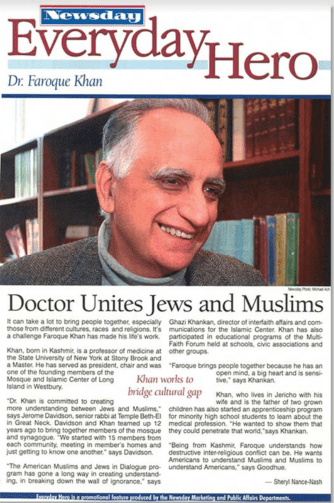
My Wish List:
My hope is that our communities will work together in helping resolve the
Israel-Palestine conflict with security for Israel and a free, viable, contiguous
state for Palestine. In my view, this unresolved conflict has a huge negative
impact globally and is the major cause of increasing anti-Semitism globally
and in particular in Europe.
In closing, let me summarize the AMJID experience over the past twenty
five- plus years: It’s been a blessing. It has cleared many stereotypes. Participants
have learned from each other and developed a better understanding of
complex issues. AMJID has opened new channels for communication. It has
served as a model for many other similar initiatives that have developed post
-9/11.
Reference:
Khan F: Story of a Mosque in America - Chapter 6 - AMJID - page 51-60 -
ISBN; 0-9709-8860-5-Printed by: Cedar Graphics, Iowa.
“For each of you We have provided a law and a clear way. Had
Allah willed, He would have made you one nation (united in
religion), but (He intended) to test you in what He has given
you; so race to (all that is) good. To Allah is your return all together,
and He will (then) inform you concerning that over
which you used to differ.”
Qur’an 5:48 (2nd half of verse)
This journal was compiled by:
Sohail Nabi with the assistance of fellow IFI executive members,
Dr Unni Mooppan, Marjaneh Issapour, Seema Rahman, Khalid S Lateef, Sahar Hussain and Faroque Khan
Back To Events List
Check out our other events
LAUNCH OF INSTITUTE ON SUNDAY OCT 25TH 2015
This event attracted a large gathering, received extensive TV and print media coverage in Newsday, Long Island Press and Islamic Horizon magazine.
See full story
WITNESS TO PEACE
Earlier this year when we heard about the visit of Pope Francis we extended an invite for him to formally launch the interfaith institute at ICLI which he was unable to accommodate.
See full story
CONFERENCE AT UN SPONSORED BY OIC AND PAKISTAN EMBASSY
The presentation was very well received. We were able to share a short video from the Oct 25th launch of the interfaith institute of ICLI
See full story
Honored for promoting harmony through the hijab
When some countries began to ban the hijab of Muslim women and attack the Islamic dress code, Dr Larycia Hawkin, a Christian and former associate professor...
See full story
New LI Interfaith Institute at mosque opens to promote understanding
John Andrew Morrow speaks during interfaith event at the Islamic Center of Long Island in Westbury on Sunday 25, 2015. (Credit : Steven Sunshine)
See full story
LI mosque creates Interfaith Institute to educate about Islam.
Dr. Farooque Ahmed Khan is shown in front of the triple arches that lead into the newly constructed building that will house the Islamic Center of Long Island...
See full story

